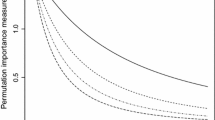Abstract
It is important that users can progressively simplify a detailed CAD model and create a simplified one for use in various applications. For this purpose, many simplification methods have been proposed, and it is known that feature-based simplification methods are superior for engineering applications. The previous feature-based simplification methods assumed that a feature-based CAD model has a single-branch feature tree, and the type of each feature is either additive or subtractive. However, a feature-based CAD model is often represented as a multi-branch feature tree. Furthermore, the type of a feature may be both additive and subtractive simultaneously. To solve these problems, we present an extended feature-based simplification method. In the proposed method, the modeling sequence of the features from a multi-branch feature tree is determined using the feature dependency graph. The importance of each feature is evaluated, and the features are rearranged by their importance using the proposed extended feature rearrangement algorithm. The feature-based CAD model is finally simplified in a manner where less important features are suppressed until the CAD model reaches the desired level of detail. To demonstrate the proposed method, a prototype system was implemented, and experiments with test cases were performed.
Similar content being viewed by others
References
Sun G (2007) A digital mock-up visualization system capable of processing giga-scale CAD models. Comput Aided Des 39(2):133–141
Lee SH (2005) Feature-based multiresolution modeling of solids. ACM Trans Graph 24(4):1417–1441
Lee SH, Lee K (2012) Simultaneous and incremental feature-based multiresolution modeling with feature operations in part design. Comput Aided Des 44(5):457–483
Lee SH (2005) A CAD-CAE integration approach using feature-based multiresolution and multi-abstraction modelling techniques. Comput Aided Des 37(9):941–955
Thakur A, Banerjee AG, Gupta SK (2009) A survey of CAD model simplification techniques for physics-based simulation applications. Comput Aided Des 41(2):65–80
Chu C-H, Chan Y-H, Wu PH (2008) 3D streaming based on multi-LOD models for networked collaborative design. Comput Ind 59(9):863–872
Lee JY, Lee J-H, Kim H, Kim HS (2004) A cellular topology-based approach to generating progressive solid models from feature-centric models. Comput Aided Des 36(3):217–229
Li WD, Lu WF, Fuh JYH, Wong YS (2005) Collaborative computer-aided design—research and development status. Comput Aided Des 37(9):931–940
Kang Y, Kim BC, Mun D, Han S (2014) Method to simplify ship outfitting and offshore plant equipment three-dimensional (3-D) computer-aided design (CAD) data for construction of equipment catalog. J Mar Sci Technol 19(2):185–196
Kim BC, Mun D (2014) Feature-based simplification of boundary representation models using sequential iterative volume decomposition. Comput Graph 38:97–107
Lee SH, Lee K (2006) Feature-based multiresolution techniques for product design. J Zhejiang Univ Sci A 7(9):1535–1543
Rappoport A (2003) “An architecture for universal CAD data exchange”, in Proceedings of ACM Symposium on Solid Modeling and Applications, pp. 266~269
Schroeder WJ, Zarge JA, and Lorensen WE (1992) “Decimation of triangle meshes”, In Proceedings of SIGGRAPH ‘92, pp. 65–70
Soucy M, Laurendeau D (1996) Multiresolution surface modeling based on hierarchical triangulation. Comput Vis Image Underst 63(1):1–14
Hoppe H, DeRose T, Duchamp T, McDonald J, Stuetzle W (1993) Mesh optimization. In Proceedings of SIGGRAPH 93:19–26
Hoppe H (1996) Progressive mesh. In Proceedings of SIGGRAPH 96:99–108
Garland M, Heckbert PS (1997) Surface simplification using quadric error metrics. In Proceedings of SIGGRAPH 97:209–216
Rossignac J Borrel P (1993) “Multi-resolution 3D approximations for rendering complex scenes”, Modeling in Computer Graphics, pp. 455∼465, Springer-Verlag
Gao S, Zhao W, Lin H, Yang F, Chen X (2010) Feature suppression based CAD mesh model simplification. Comput Aided Des 42(12):1178–1188
Xiao H, Li Y, Yu JF, Zhang J (2013) CAD mesh model simplification with assembly features preservation. Science China Inf Sci 57(3):1–11
Joshi S, Chang TC (1988) Graph based heuristics for recognition of machined features from a 3-D solid model. Comput Aided Des 20(2):58–66
Chuang SH, Henderson MR (1990) Three-dimensional shape pattern recognition using vertex classification and the vertex-edge graph. Comput Aided Des 22(6):377–387
Gavankar P, Henderson MR (1990) Graph-based extraction of protrusions and depressions from boundary representations. Comput Aided Des 22(7):442–450
Gao S, Shah J (1998) Automatic recognition of interacting machining features based on minimal condition subgraph. Comput Aided Des 30(9):727–739
Rezayat M (1998) Midsurface abstraction from 3D solid models: general theory and applications. Comput Aided Des 28(11):905–915
Donaghy RJ, Armstrong CG, Price MA (2000) Dimensional reduction of surface models for analysis. Eng Comput 16(1):24–35
Sheen D-P, Son T-G, Myung D-K, Ryu C, Lee SH, Lee K, Yeo TJ (2010) Transformation of a thin-walled solid model into a surface model via solid deflation. Comput Aided Des 42(8):720–730
Zhu H, Menq CH (2002) B-rep model simplification by automatic fillet/round suppressing for efficient automatic feature recognition. Comput Aided Des 34(2):109–123
Venkataraman S, Sohoni M, and Rajadhyaksha R (2002) “Removal of blends from boundary representation models”, In Proceedings of 7th ACM Symposium on Solid Modeling and Applications, pp. 83–94
Sun R, Gao S, Zhao W (2009) An approach to B-rep model simplification based on region suppression. Computer & Graphics 34(5):556–564
Kwon S, Kim BC, Mun D, Han S (2015) Simplification of feature-based 3D CAD assembly data of ship and offshore equipment using quantitative evaluation metrics. Comput Aided Des 59(2):140–154
Kanai S, Iyoda D, Endo Y, Sakamoto H, Kanatani N (2012) Appearance preserving simplification of 3D CAD model with large-scale assembly structures. Int J Interact Des Manuf 6(3):139–154
Yu J-F, Xiao H, Zhang J, Cheng H, Xin B (2013) CAD model simplification for assembly field. Int J Adv Manuf Technol 68(9):2335–2347
Yoon Y and Kim BC (2016) “CAD model simplification using feature simplification”, Journal of Advanced Mechanical Design, Systems and Manufacturing, 10(8), pp. JAMDSM0099
Baase S and Gelder AV, Computer algorithms: introduction to design and analysis, 3rd Edition, (November 15, 1999), ISBN-10: 0201612445.
SolidWorks Defeature Homepage (2017) http://www.solidworks.com/sw/products/3d-cad/defeature.htm, Dassault systemes.
spGate Homepage (2017) http://www.armonicos.co.jp/products/spgate, Armonicos.
CADdoctor Homepage (2017) http://elysiuminc.com/products/caddoctor, Elysium.
3D ACIS Modeler Defeaturing Homepage (2017) https://www.spatial.com/products/defeaturing, Spatial.
Author information
Authors and Affiliations
Corresponding author
Rights and permissions
About this article
Cite this article
Mun, D., Kim, B.C. Extended progressive simplification of feature-based CAD models. Int J Adv Manuf Technol 93, 915–932 (2017). https://doi.org/10.1007/s00170-017-0491-y
Received:
Accepted:
Published:
Issue Date:
DOI: https://doi.org/10.1007/s00170-017-0491-y




